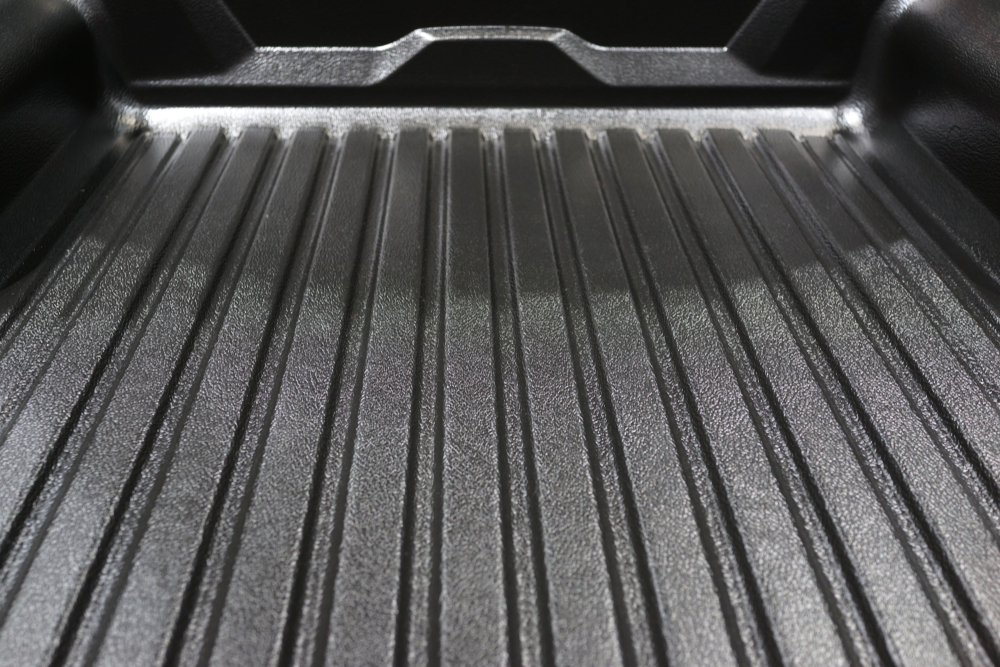Spray-In Bedliners: How It’s Done — Prep, Gear & Technique
Great bedliners aren’t a product you buy — they’re a process you hire. Here’s the step-by-step workflow our customers should expect from a professional shop.
Why process matters (as much as chemistry)
Polyurea and polyurethane systems gel fast — often within seconds — which is why surface prep, temperature control, and spray technique have to be dialed in before you ever pull the trigger. :content Reference[oaicite:0]{index=0}
Core equipment in a pro booth
- Plural-component proportioner: heats, pressurizes, and meters A/B to the correct ratio before they mix at the gun (e.g., Graco Reactor series for polyurea coatings). :content Reference[oaicite:1]{index=1}
- Air-purge spray gun: a Fusion-style gun built for polyurethane foam and polyurea applications — simple air-blast purge helps minimize downtime and maintenance. :content Reference[oaicite:2]{index=2}
- Heated hoses & temp monitors: conditions material to target viscosity for consistent atomization and texture. :content Reference[oaicite:3]{index=3}
- Ventilated spray enclosure + PPE: controls overspray and protects techs from isocyanate exposure; follow OSHA/ACC guidance on respirators, skin protection, and decontamination. :content Reference[oaicite:4]{index=4}
Prep — where durability is won
- Vehicle teardown & mask: Remove tailgate, bed bolts, tie-downs, and trim as needed; mask cab, rails, lights, and jambs to protect from overspray. (This is also part of many brands’ quality checklists.) :content Reference[oaicite:5]{index=5}
- Degrease & clean: Eliminate oils, silicones, and road film; any residue can block adhesion.
- Mechanical profile (scuff/abrade): Create a uniform surface profile so the coating can key into the bed; edges and corners get special attention.
- Dust removal & solvent wipe: Blow down, vacuum, then wipe with appropriate solvent per product TDS.
- Environmental checks: Confirm substrate temperature is at least 5°F (3°C) above dew point and rising before spraying. Moisture or a cold substrate can compromise adhesion. :content Reference[oaicite:6]{index=6}
- Prime (as specified): Some systems or substrates require primers; follow the liner’s technical data sheet. :content Reference[oaicite:7]{index=7}
Spray & build — getting the film right
With polyurea/hybrid systems, gel happens quickly. A skilled tech controls standoff distance, gun speed, and overlap to build even thickness across ribs, corners, and high-wear zones without runs or dry spray. :content Reference[oaicite:8]{index=8}
- Target thickness: Many pro shops and gauges reference ~125 mils (≈3 mm) as a common spec for general-use truck beds; some applications go thicker, up to 3–6 mm. Always follow the system’s spec. :content Reference[oaicite:9]{index=9}
- Brand variations: Some technical sheets list ranges from ~40–100 mil (or more) depending on product and use. :content Reference[oaicite:10]{index=10}
- Flash & texture: Texture is tuned via tip size, pressure, temp, and distance to balance grip vs. cleanability.
Quality control — measure, don’t guess
- Visual & tactile check: Look for uniform texture, even coverage on ribs/corners, and clean edges.
- Thickness measurement: Use a magnetic or ultrasonic gauge in multiple bed zones; many resources cite 125–250 mil common for bedliners, but measure to your liner’s spec. :content Reference[oaicite:11]{index=11}
- Hardware reinstall & final mask pull.
- Cure window & return-to-service: One reason polyurea is popular is its rapid set and quick return to service (minutes to hours depending on formula and temperature). :content Reference[oaicite:12]{index=12}
Safety first (and always)
Isocyanates demand serious controls. Use appropriate respiratory protection (many shops use supplied air), gloves, suits, and eye protection; keep contaminated clothing at the shop; and handle drums/hoses per OSHA/industry guidance. :content Reference[oaicite:13]{index=13}
Want it done right the first time?
We spray LINE-X bedliners weekly in Fairfax with pro equipment and a repeatable process. We’ll spec texture and thickness for your use — contractor, fleet, or weekend rig.
Schedule your liner
|
Get a quick quote
Questions? Call (703) 591-0900.


